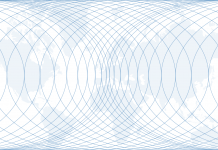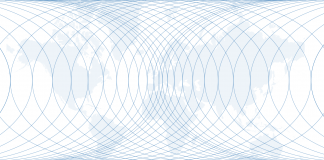The massive spring offensive against Ukraine that Russia threatened has not materialized. This does not mean it won’t happen, but it raises serious questions. A major offensive should not be telegraphed for obvious reasons, and if the secret leaks, it should be launched rapidly. The Russians have not crippled the Ukrainians, nor have they forced the United States to stop sending weapons to support Ukraine on the battlefield. The Russians see themselves as incapable of capitulating or winning a decisive victory. An alternative strategy is needed. The frequent Russian references to the possible use of nuclear weapons, or breaking with the U.S. on arms controls, make sense in this context.
That the strategy pivots around frequent references to nuclear action is a reminder of why they used to be called “terror weapons.” Lenin said the purpose of terror is to terrify. The threat of a nuclear attack clearly has that strategy in mind. It is a reasonable strategy, capable of breaking the material and psychological capabilities of the enemy.
The advantage of nuclear weapons is their ability to inflict significant casualties with a single weapon. A nuclear weapon has a large kill zone, which means it can carry out this mission efficiently. Nuclear weapons may not need high accuracy, but they do need survivability. One part of that is the launch plan, which may be targeted by the enemy. Another risk is interception in flight by the enemy, but in this case the weapon may still be able to destroy a large area. That said, there are weaknesses in nuclear weapons. They are dependent on counterintelligence to create survival strategies. They normally have a fixed launch pad, and the launch vehicle, while rapid, is not normally maneuverable. The weight of the warhead might limit the time to target. Taken as a whole, nuclear weapons combine a large kill zone with high lethality, but until launched they are vulnerable.
From the Russian point of view, a nuclear strike creates more problems than solutions. From the American point of view, the defensive posture is inherently dangerous. At the same time, both the Russian and American positions have vulnerabilities built in. Therefore, both sides must create alternatives.
For years, and more intensely in recent months, there has been open discussion on both sides about hypersonic missiles. Hypersonic indicates high speed, as well as long range. What the name does not capture but what is essential is that hypersonics are precision guided. This means that a guidance system maneuvers the missile to a highly specific target, limiting the need for high explosives with large kill zones and implying hyper accuracy on a strike, allowing precision utilization of intelligence. Maneuverability indicates the ability to evade enemy defenses.
The rise of hypersonics, coupled with precision and other values, puts nuclear weapons at great risk. Accumulating target intelligence, programming target guidance and maintaining the integrity of the attack vehicle create room for error on a stable platform.
The key weakness remaining with hypersonics is their speed, for which maneuverability doesn’t compensate. To ensure survivability, hypersonics also need extremely high maneuverability. Even more important, their long range allows the use of hypersonics to detect and attack at extreme distance. The ability to detect a maneuvering target creates an envelope of relative safety. Indeed, hypersonics, able to reach Mach 5 or higher and strike long-distance targets, would change the nature of war and make tactical nuclear threats in the current situation difficult. But that is not yet here.
The idea of hypersonics naturally leads to planning for high-speed, maneuverable systems and opens a new type of warfare. But the constant discussion of relatively lower-speed systems portends the future.






